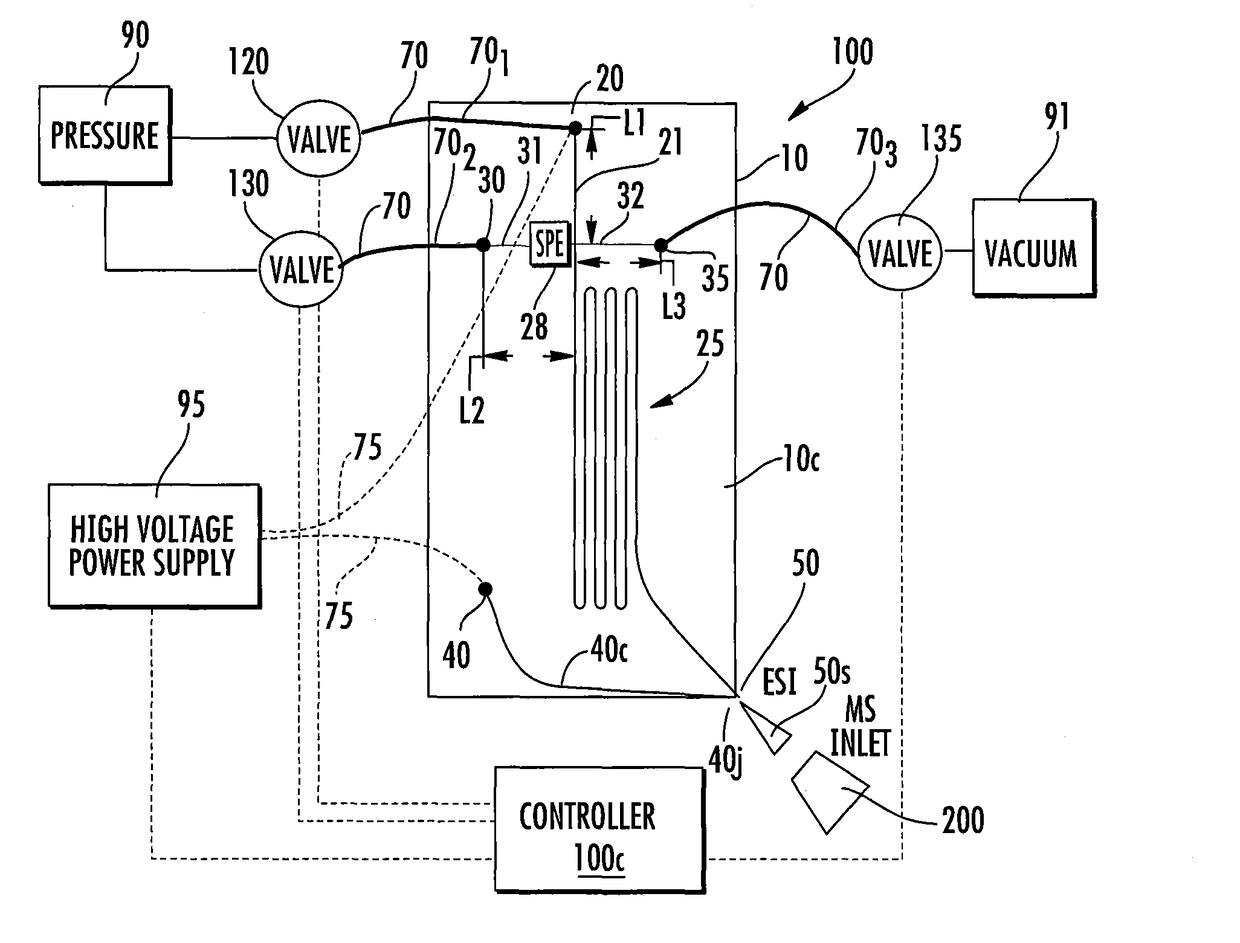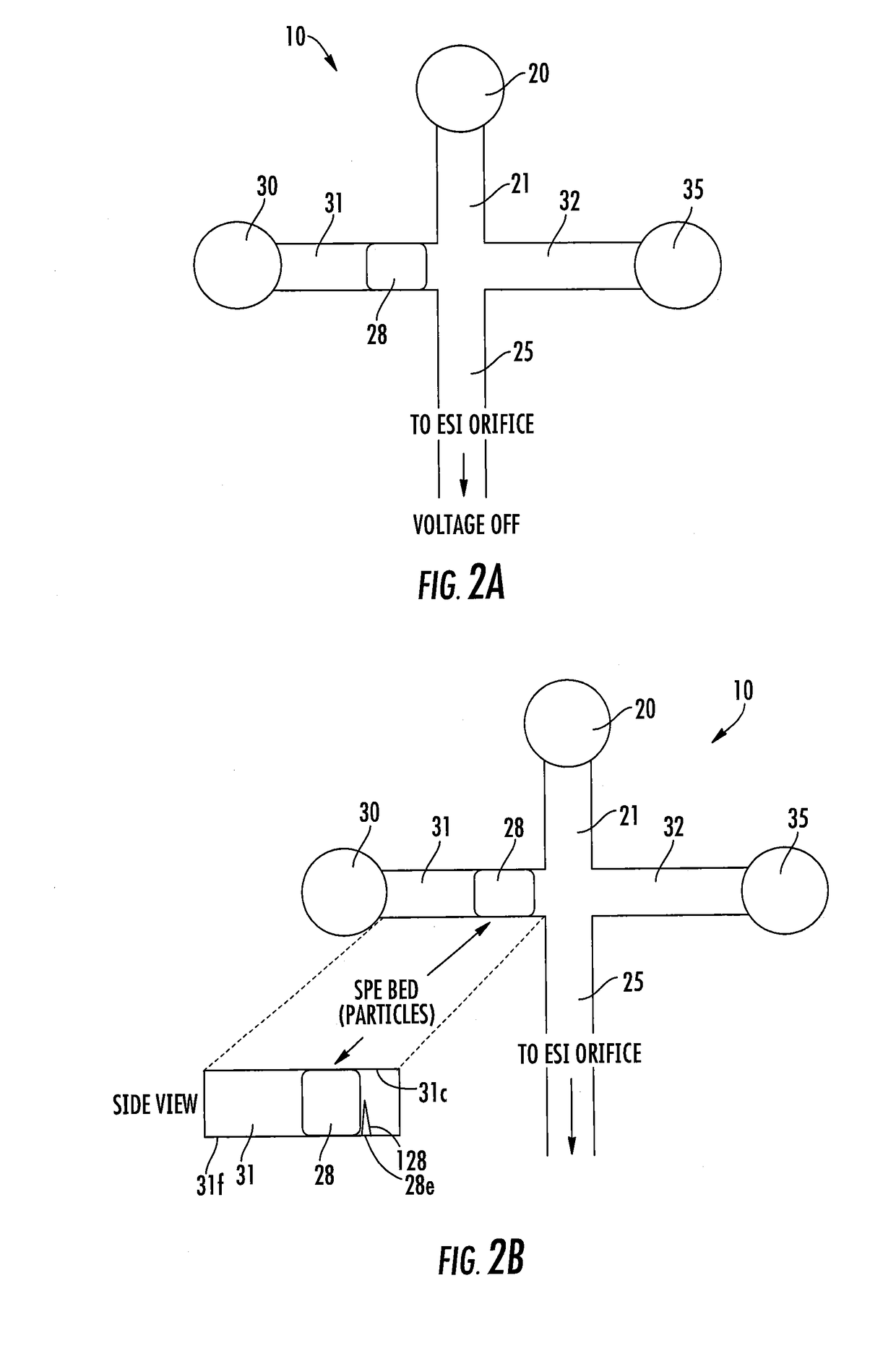Solid phase extraction with capillary electrophoresis
a solid phase and electrophoresis technology, applied in the field of sample processing, can solve the problems of ineffective use of inability to effectively use some on-device sample focusing methods, and inability to load a sample volume larger, etc., to achieve high-performance separation, reduce transfer steps, and eliminate or reduce band broadening
- Summary
- Abstract
- Description
- Claims
- Application Information
AI Technical Summary
Benefits of technology
Problems solved by technology
Method used
Image
Examples
examples
[0215]LC-MS grade acetonitrile, methanol, acetone, and formic acid (99.99%) were acquired from Fisher Chemical (Fairlawn, N.J.) as well as HPLC grade ammonium acetate and trifluoroacetic acid (TFA) (99.975%). Water was purified with a Nanopure Diamond water purifier (Barnstead International, Dubuque, Iowa). (3-Amino)di-isopropylethoxysilane (APDIPES) was acquired from Gelest (Morrisville, Pa.). Sodium phosphate dibasic, trichloro(1H,1H,2H,2H-perfluorooctyl)silane was acquired from Sigma-Aldrich (St. Louis, Mo.). N-hydroxylsuccinimide functionalized polyethylene glycol (NHS-PEG) reagent with 450 polymer units (MW=20 kDa) was purchased from Nanocs, Inc. (Boston, Mass.). Met-enkephalin, bradykinin, angiotensin II, thymopentin, and human glu-fibrionpeptide were purchased from American Peptide Company (Sunnyvale, Calif.). MassPREP Phosphorylase B and E. Coli digest were procured from Waters Corporation (Milford, Mass.). A schematic for the SPE-CE-ESI microchip can be found in FIG. 1A. Th...
PUM
| Property | Measurement | Unit |
|---|---|---|
| volume | aaaaa | aaaaa |
| length | aaaaa | aaaaa |
| length | aaaaa | aaaaa |
Abstract
Description
Claims
Application Information
 Login to View More
Login to View More - R&D
- Intellectual Property
- Life Sciences
- Materials
- Tech Scout
- Unparalleled Data Quality
- Higher Quality Content
- 60% Fewer Hallucinations
Browse by: Latest US Patents, China's latest patents, Technical Efficacy Thesaurus, Application Domain, Technology Topic, Popular Technical Reports.
© 2025 PatSnap. All rights reserved.Legal|Privacy policy|Modern Slavery Act Transparency Statement|Sitemap|About US| Contact US: help@patsnap.com



